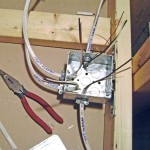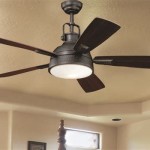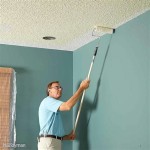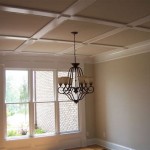A Guide to Vintage Ceiling Light Shades for Windows 10
While the term "Windows 10" might seem out of place in a discussion about vintage ceiling light shades, it's important to acknowledge its likely presence as a keyword related to online searches. This guide focuses specifically on vintage ceiling light shades, covering various aspects from their history and styles to their installation and maintenance.
Key Styles of Vintage Ceiling Light Shades
Vintage ceiling light shades encompass a wide array of styles, reflecting evolving design trends throughout the 20th century. Understanding these styles is crucial for selecting a shade that complements a particular interior design scheme.
Some prominent styles include:
- Art Deco: Characterized by geometric patterns and bold colors.
- Mid-Century Modern: Known for its clean lines and organic shapes.
- Hollywood Regency: Exemplified by glamorous materials like crystal and brass.
- Victorian: Often featuring ornate details and frosted glass.
- Industrial: Utilizing metal and simple, functional designs.
Materials Used in Vintage Ceiling Light Shades
The materials used in constructing vintage shades contribute significantly to their aesthetic and value. Identifying these materials helps authenticate a shade's age and assess its quality.
Common materials used in vintage ceiling light shades include:
- Glass: Including stained glass, frosted glass, and opalescent glass.
- Metal: Such as brass, copper, and wrought iron.
- Fabric: Including silk, linen, and parchment.
- Plastic: Particularly Bakelite, a popular material in the mid-20th century.
Identifying Authentic Vintage Shades
Distinguishing authentic vintage shades from reproductions requires careful examination and attention to detail. Several factors can help determine a shade's authenticity.
These factors include:
- Manufacturing techniques: Examining the seams, joints, and finishing details.
- Materials: Identifying the type of glass, metal, or fabric used.
- Wear and tear: Authentic vintage items often show signs of age and use.
- Maker's marks: Looking for stamps or labels indicating the manufacturer.
Where to Find Vintage Ceiling Light Shades
Sourcing vintage ceiling light shades involves exploring various avenues, both online and offline. Knowing where to look increases the chances of finding desirable pieces.
Potential sources include:
- Antique shops and flea markets: Offering a curated selection of vintage items.
- Online marketplaces: Providing access to a wider range of sellers and shades.
- Auctions: Presenting opportunities to bid on rare and collectible pieces.
- Architectural salvage yards: Offering reclaimed fixtures from demolished buildings.
Installation and Safety Considerations
Installing vintage ceiling light shades necessitates careful handling and adherence to safety guidelines to prevent damage and ensure proper function.
Key safety and installation considerations include:
- Turning off the power supply before working with any electrical fixtures.
- Checking the wiring for any damage or fraying.
- Using appropriate mounting hardware for the specific shade and fixture.
- Ensuring the shade is securely attached to prevent it from falling.
Cleaning and Maintaining Vintage Shades
Proper cleaning and maintenance preserve the beauty and longevity of vintage ceiling light shades. Different materials require specific cleaning methods.
Cleaning considerations include:
- Dusting regularly with a soft cloth or feather duster.
- Cleaning glass shades with a mild soap and water solution.
- Polishing metal shades with appropriate metal cleaners.
- Avoiding harsh chemicals that could damage the shade's finish.
Incorporating Vintage Shades into Modern Decor
Integrating vintage ceiling light shades into contemporary interiors adds character and a touch of history to a space. Balancing old and new elements creates a visually appealing and unique aesthetic.
Design tips include:
- Choosing a shade that complements the overall style of the room.
- Using the shade as a focal point or accent piece.
- Pairing the shade with modern light fixtures for a cohesive look.
- Considering the size and scale of the shade in relation to the room.
Valuing Vintage Ceiling Light Shades
Determining the value of a vintage ceiling light shade involves considering various factors, including its rarity, condition, and maker.
Valuation factors include:
- Rarity: Scarcer shades generally command higher prices.
- Condition: Well-preserved shades are more valuable than those with damage.
- Maker: Shades by renowned designers or manufacturers are often more sought after.
- Materials: The type and quality of materials used impact the value.

Vintage Lighting Style Guide Destination Flip The Switch

Diffe Types Of Lampshades A Guide To Lampshade Varieties

Corner Window Curtains Solutions Ideas The Shade

Dining Room Light Fixtures Guide Color Cord Company

Types Of Lamp Shades The Home Depot

Home Decorators Collection Knollwood 6 Light Antique Broe Chandelier With Vintage Brass Accents And Clear Glass Shades 7992hdcab The Depot

Cottage Lighting Ideas 20 Pretty Ways To Light A

Plug In Dimmable Pendant Lights Unique Chandelier Modern Lamp Apartment Lighting Ceiling Fixture Antique Or Led Bulbs

Lighting Floor Lamps String Lights Lanterns World Market

Budget Window Shades Curtains Roundup Jenna Sue Design
Related Posts








